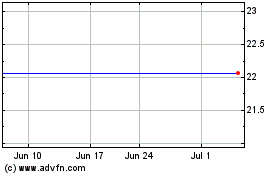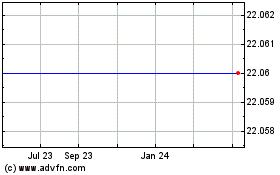Simon Property's Power On Mall Industry Debated With General Growth Bid
February 16 2010 - 4:12PM
Dow Jones News
Simon Property Group's (SPG) fiefdom expands greatly in the
retail real estate industry if its $10 billion bid for insolvent
General Growth Properties succeeds. But the mall landlord's ability
to wield significantly more power over tenants on rent and lease
negotiations is up for debate.
The nation's largest mall owner and real-estate investment trust
is positioning to takeover its biggest rival General Growth,
potentially placing almost 50% of the nation's regional malls under
its control. This entrenches Simon's influence, but the scope is
unclear.
Some industry experts say it is going put retailers in an
uncomfortable position knowing they have one huge developer to
negotiate deals. A mall owner with hundreds of locations can
pressure retailers to open stores in struggling malls as a
condition of getting space in its best-quality properties.
"Anybody that has that much clout is not necessarily good for
the business. However...retailers are not going to be forced into
situations any longer like they were in the past (by going) into
unproductive properties or being leveraged into properties where
they can't be successful," said Greg Maloney, President and Chief
Executive of Jones Lang LaSalle Americas Retail.
"Larger developers and managers feel very good about having a
large portfolio because we can bring in a retailer such as a Gap or
an Abercrombie & Fitch and show them multiple properties at one
time versus smaller developers where they have to go around and
have a lot different conversations. From that stand point...it's
going to make it easy," he said.
The deal, if accepted by General Growth's board and approved by
its creditors and U.S. Bankruptcy court, would combine two of the
largest and oldest mall owners in the U.S. into a colossus with 550
malls--at least a third of the entire U.S. market.
"Even a relatively large combined Simon/General Growth landlord
will have a somewhat limited ability to dictate rents or demand
that tenants lease space in other poorer performing malls," said
Ryan Severino an economist at Reis, Inc.
He said for national tenants with stores in a large number of
malls, the combined company could exert some influence over lease
terms, but that would still be driven primarily by retailers demand
to locate within a particular mall.
"So while Simon/General Growth might be able to have some
influence on the lease rates at the margin, they will not be able
to purely dictate lease rates and locations to potential or
existing tenants," Severino said.
Simon's bid for General Growth comes at a time when mall REITs
had been grappling with a retail industry hammered by steep
declines in consumer spending and woes in the broader commercial
property market as values plummet and foreclosures rise amid a
credit crunch and recession. Landlords have been under pressure to
offer rent relief and other concessions to keep desired tenants,
and signed leases with discount retailers.
Underscoring the pain, during the fourth quarter vacancies rose
by 20 basis points to hit 8.8%, according to Reis, the highest
level on record since the firm began tracking such data in 2000.
Asking rents for regional fell by 0.4% in the fourth quarter,
marking five consecutive quarters of decline since the fourth
quarter of 2008, the firm said.
Jones Lang's Maloney said there have always been certain
developers to push rents because of their product type. Taubman
Centers Inc. (TCO) "is a great example of that," he said, noting
they have few properties, but are highly productive in luxury
malls.
"They've always pushed rents in all of their properties and kept
occupancies down," he said. "(Simon will) try to push (rents) but
everybody else tries to push it anyway."
There could also be some anti-trust implications by merging the
two largest mall owners in the U.S.
"The result will depend upon whether Simon will be able to avail
itself of what is known of the failing firm defense," said Brian A.
Weinberger, an attorney at Buchalter Nemer.
He said that would require the company to show, among other
things, that there are no practical alternatives to the proposed
merger which would save General Growth.
"If there are other bidders out there, that may be tough," sell,
Weinberger said.
-By A.D. Pruitt, Dow Jones Newswires; 212-416-2197
angela.pruitt@dowjones.com
(Karen Talley and Kris Hudson from the Wall Street Journal contributed to this report)
GGP Inc. (NYSE:GGP)
Historical Stock Chart
From May 2024 to Jun 2024

GGP Inc. (NYSE:GGP)
Historical Stock Chart
From Jun 2023 to Jun 2024
